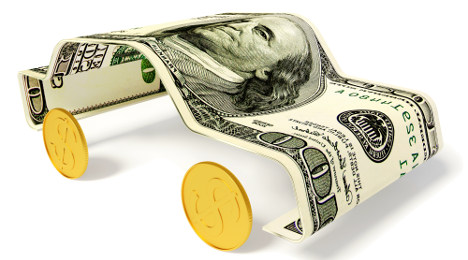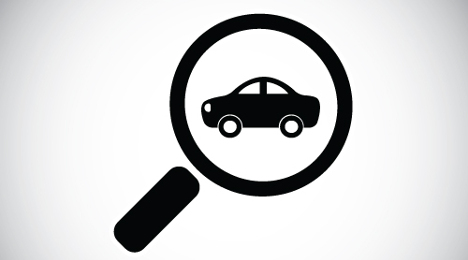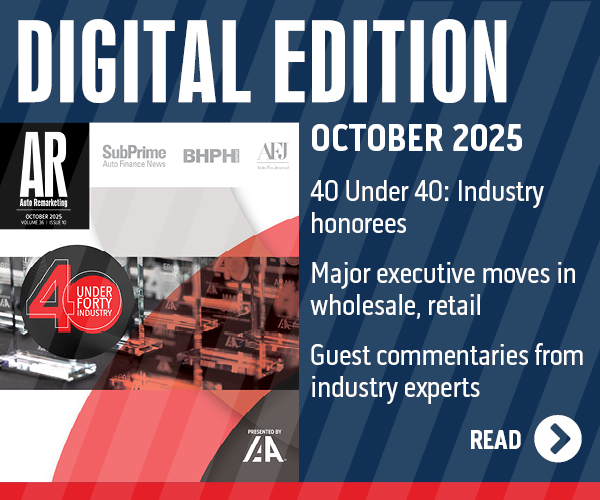With retail prices rising, Experian Automotive reported the average loan amount and monthly payment for used and new vehicles continued to trend upward.
According to its most recent State of the Automotive Finance Market report, Experian indicated on Thursday that the average loan amount for a new vehicle reached $30,032, an all-time high. Meanwhile, the average loan amounts for used vehicles stood at $20,723 for vehicles retailed at franchised dealers and $16,124 for units turned at independent stores — both Q1 highs.
To help consumers keep payments within their budget constraints, Experian highlighted that leasing reached its highest level on record. Leasing accounted for 31.1 percent of all new-vehicle transactions during the first quarter of 2016.
Additionally, while leasing is still predominately an option for new-vehicle financing, analysts noticed used-vehicle leasing increased 2.1 percent from a year ago.
“The continued rise in new vehicle costs have kept many consumers exploring options to keep their monthly payments affordable,” said Melinda Zabritski, Experian’s senior director of automotive finance.
“As long as vehicle prices continue to rise, we can expect leasing rates to grow along with them,” Zabritski continued. “However, consumers need to understand the nuances of their lease agreements and make sure that leasing fits their lifestyle.”
Findings from the report also showed an increase in the percentage of prime consumers who shifted to the used vehicle market. In fact, prime borrowers elected to purchase a used vehicle more than 54 percent of the time in Q1 2016, a 4.8 percent increase from the previous year.
However, the opposite is true for the new-vehicle finance market. While the percentage of subprime borrowers in the total loan market decreased 1.1 percent, Experian found that the percentage of subprime borrowers for new vehicles saw a 5.5 percent increase from a year ago.
“The record highs we have seen in vehicle prices also have had a significant impact on the loan market,” Zabritski said. “For example, the number of prime borrowers who switched to leasing has driven an increase in the percentage of subprime borrowers shown in the new vehicle segment.
As a result, we will continue to see consumers view used vehicles, longer-term loans and leasing as a way to keep payments affordable,” she went on to say.
Experian mentioned that shifts in risk tier distribution for new and used vehicles also are reflected in average credit scores. The average credit score for a new vehicle loan was 710, down three points from the previous year, while the average credit score for a used vehicle loan was up three points to 645.
Additional insights from the Q1 2016 report:
• The percentage of new vehicles financed was 86.3 percent, up 1.6 percent from a year ago.
• The average loan terms for new vehicles, used vehicles from franchise dealers and used vehicles from independent dealers all increased by one month, reaching 68, 66 and 58 months, respectively.
• The average interest rates were 4.79 percent for a new vehicle loan, 7.81 percent for a used vehicle loan at a franchise dealer and 12.22 percent for a used vehicle loan at an independent dealer.
• Average monthly payments for new vehicle loans reached an all-time high — $503. Average monthly payments for used vehicle contracts originated at a franchised dealer stood at $376 and $351 for contracts originated at an independent dealer.
Tony Hughes and Michael Vogan of Moody’s Analytics proposed what some finance company executives might consider an outside-the-box idea to help their customers who are stretching contract terms as long as possible in order to keep monthly payments affordable and then running into costly vehicle repairs.
Hughes and Vogan discussed their plan within a white paper shared recently with SubPrime Auto Finance News titled “Alternatives to Long-Term Car Loans?” The experts described how vehicle equity lines of credit could provide relief for consumers they categorized as “cash-strapped subprime borrowers.”
Before going into an example of how the strategy might be beneficial to both consumers and finance companies, the pair said, “These folks may not be able to afford the monthly payments on a traditional five-year loan but could cover a seven- or eight-year commitment. We briefly propose a solution that will allow budget-constrained borrowers to buy a vehicle, build equity therein, improve their credit standing, and still cover potential emergencies.”
Here’s how Hughes and Vogan explained the concept: “If I buy a new Toyota Camry with a minimal down payment, I will hold about a $12,000 asset after my five-year loan has expired. With an eight-year loan, by contrast, I will have about $1,000 in equity at the same point in the life of the vehicle.
“In terms of monthly principal payments, the five-year loan is about $150 extra per month at the outset of the period, assuming a 12 percent annual percentage rate on each loan. Interest payments are lower for the shorter term loan,” they continued.
“In comparing these loan structures, bear in mind that in one case, the borrower is being forced to save in the form of illiquid vehicle equity,” they continued. “In the other, the borrower pockets cash that can either be saved for a rainy day or spent on other forms of consumption.”
Hughes and Vogan called their recommendation “a middle ground” between the long-term loan and the traditional five-year financial structure. They suggested that a line of credit proportional to the amount of equity held in the vehicle is offered to the borrower at the outset of the loan. The line is initially zero, assuming that the vehicle is financed at full economic cost.
As loan payments consistent with a five-year term are made, and as equity in the car slowly builds, Hughes and Vogan pointed out the size of the available credit line also increases.
If the proposed structure uses a 50 percent multiplier, after one year a $500 secured credit line will be available to the borrower, according to the calculation by Hughes and Vogan. After two years, $1,500 will be available to the client to cover potential emergencies or spending requirements.
At the end of five years, the borrower will have clear title to a $12,000 car and a $6,000 credit line.
“There is no doubt that longer-term loans have expanded access to vehicle credit for poorer buyers,” Hughes and Vogan said. “The risks with such loans, however, are manifest.
“The industry should be looking at other, potentially safer ways to make vehicle finance accessible by subprime borrowers,” they continued. “The combination of a tougher five-year repayment schedule and access to a secured credit line may be a useful addition to the financial arsenal that might increase the welfare of borrowers and lenders alike.”
NADA Used Car Guide gave SubPrime Auto Finance News an exclusive look at its latest white paper that examines a new way of financing in light of lengthening terms and deeper negative equity positions.
During a conversation on Monday, executive analyst Jonathan Banks explained what NADA UCG found in terms of how much negative equity is becoming an issue in auto financing, especially if the contract is attached to a car as opposed to a truck. Banks said his team reviewed data from J.D. Power’s PIN Network, which covers about 35 percent of the total auto finance market. Through the first quarter of last year, Banks indicated about 29 percent of originations included trades that carried negative equity. Through the first quarter of this year, that level ticked up to 31 percent.
While a 2-percent year-over-year rise might not seem overly noteworthy, Banks pointed out how the situation is much more dramatic when cars are involved as opposed to trucks and SUVs, which have not seen their used-vehicle prices decline as much.
Banks noted that about 60 percent of car contracts had an equity position through the first quarter of both last year and this year. However, the amount dropped by 50 percent, sitting at about $1,000 during Q1 of 2015 and $500 at the first quarter of this year.
“Even the people who are trading in with an equity position, that’s declined dramatically,” Banks said. “And arguably $500 as an equity position, likely a lot of time that’s what the dealer is giving to the customer to facilitate the loan. It’s definitely an issue on the cars and we’re seeing that changing pretty quickly.”
For trucks and SUVs, it’s a much different scenario. Banks relayed J.D. Power data that showed about 80 percent of originations for those units during Q1 2011 included trades with equity. This past quarter, the level dropped to 70 percent but Banks pointed out that the amount of equity was much more robust, as trucks and SUVs brought about $4,000 to the table.
“People coming in with a trade-in with trucks, SUVs and even compact SUVs, we think are going to be in a strong equity position in 2016. It’s a much different situation when you’re looking at the car versus the truck segment,” Banks said. “We expect it to continue. A lot of that is the used prices on cars are dropping, and that’s going to continue as the lease maturities for those segments are going to be quite high.”
What’s triggering all this concern about negative equity? It’s a metric finance companies have been watching for some time — lengthening contract terms.
“Roughly when you extend a loan from 60 to 72 months, that pushes back the equity position by about the same amount of time by about 12 months,” Banks said. “When you consider about one-third of the loans represent 72 months or longer, according to PIN data, this is problematic, especially when considering the negative equity trends especially in the car segments.
“Someone in a car loan with a longer term is unlikely to be in an equity position coming back into the market in 2016,” he continued. “We think it’s going to get a bit worse if our forecasts are correct for used-vehicle prices, where we’re anticipating about a 6 percent decline in 2016 and more declines in ’17 and ’18 that probably will be less dramatic than the 6 percent but declines nonetheless.
“Consumers that are in these longer-term loans who want to come back into the market this year or next year or 2018 especially in car loans — truck loans are a little bit better — the chance of more negative equity is greater,” Banks went on to say.
Compounding the matter is the behavior NADA UCG is seeing from automakers. Banks indicated overall incentive levels are up about 10 percent so far this year with a 5-percent rise for lease subventions.
“Manufacturers have been very reliant on lease subvention to keep sales humming,” Banks said. “I don’t believe this is sustainable. When you look at incentive as a percentage of MSRP, they’re reaching close to 10 percent of MSRP. It’s truly a bad signal.
“You do not want to get people into your vehicles through discounting,” he continued. “Our research suggests that when you do that, it tends to make consumers think high discounts means more discounting and they say, ‘I’ll wait on the sidelines until I get that optimal discount.’ That’s not really what you want to do. You want to get consumers buying your product for the attributes of that product.”
What should the industry do instead? NADA UCG recommended in its white paper that will be distributed later this month that finance companies “can mitigate some of the risk associated with lower equity levels by fine-tuning the amount of credit extended on a new automotive loan at origination by complementing current processes with market-based data.”
Banks mentioned during the conversation with SubPrime Auto Finance News that these current trends aren’t necessarily out of left field. He noted that the industry witnessed such developments during the early 2000s as well as during the middle of the 1990s.
“Bottom line: When the customers come back to the market, they’re going to be coming back in a car loan likely with negative equity, coming out of a longer-term loan which likely has a lower payment due to the interest rates,” he said. “They’re going to be expensive to get into a replacement vehicle.
“What we’ve seen already, and likely one of the reasons we’ve seen incentives shoot up in the car segment, is a lot of the consumers might stay on the sidelines and delay their purchase because of their negative equity,” Banks went on to say.
Online pre-qualified monthly payment marketing provider DriveItNow recently reached the milestone of more than 4 billion monthly payments quoted to online shoppers since the service launched in 2008.
The company highlighted DriveItNow’s patent pending truPayments calculation engine is now generating almost 200 million payment views a month, creating thousands of credit qualified leads for hundreds of automotive dealer websites and digital retailing platforms, such as Dominion Dealer Website Services, Autobytel’s Payment Pro, and GoMoto’s Xpress Shopping in-store Kiosks.
DriveItNow explained pre-qualified monthly payments are instantly calculated using the car shopper’s actual credit bureau, trade-in equity, bank & OEM finance/lease programs and VIN specific dealer inventory. Displayed payments meet federal, state and OEM compliance requirements. Credit bureau data is retrieved without requiring a Social Security Number or date of birth along with no impact on the shopper’s credit score.
“As a dealer and online lender, we know from first-hand experience, not surveys, what it takes to engage online car shoppers,” DriveItNow president Tarry Shebesta said. “Our direct-to-consumer sales experience gives DriveItNow an edge over other digital retailing services.”
DriveItNow also offers what it calls the Shop-By-Payment service, giving buyers an instant list of all new and used vehicle makes and models they can buy based on their credit and desired monthly budget.
“Shopping for cars based on the consumer’s credit and monthly budget creates a realistic expectation of what they can buy,” Shebesta said. "Shop-By-Payment gives dealers the ability to engage shoppers further up in the buying funnel and generates conquest sales opportunities.”
Findings from a recent Autotrader survey released on Wednesday showed 70 percent of respondents expect to receive a tax refund this year.
Perhaps better yet for dealerships and finance companies, Autotrader’s survey conducted in February that included 550 U.S. adults contained information that might goose turns and originations. Site officials highlighted that of the 27 percent of survey respondents who plan to spend their refund on a car-related expense, 61 percent are looking to purchase a new or used vehicle.
“There's nothing like a sudden influx of cash to spur on big purchases, and tax refunds make for great down payments on new and used cars,” Autotrader senior analyst Michelle Krebs said. “However, it’s important for car shoppers to be smart about the purchase, being sure to get the right car for their needs that fits nicely into their budgets.”
If a shopper comes to your store’s website or showroom not ready to sign a contract for the most expensive vehicle in inventory, Autotrader’s editors recommended what they think are the 10 best used cars now available and easy to find for a retail price of $13,000 or less:
2012-2015 Chevrolet Sonic
2007-2012 Mazda CX-9
2010-2012 Ford Fusion
2003-2008 Nissan 350Z
2005-2010 Honda Odyssey
2005-2012 Nissan Frontier
2006-2011 Hyundai Azera
2010-2015 Subaru Outback
2010-2014 Kia Soul
2006-2012 Toyota RAV4
Used and new metal is rolling over the curb at paces pleasing to dealers and finance companies. But more vehicles are connected to contracts at lengths approaching the time a two-term president spends in the White House.
Autotrader senior analyst Michelle Krebs acknowledged the chatter about longer-term loans intensified as the industry gathered for recent events in Detroit, New York and Las Vegas. Those conversations also included concerns about loans lasting 84 months or even longer, especially for new models where Kelley Blue Book estimated average transaction price for light vehicles in the United States hit $33,666 in March.
“Yet it doesn’t seem like anybody wants to be the one that blinks and backs down. So while there’s a lot of concern and chatter about it, so far I don’t think we’ve seen any action reversing it,” Krebs said when Autotrader and KBB hosted a conference call with the media this past Friday morning.
KBB’s information showed last month’s new-car prices increased by $645 or 2 percent from March of last year. Analysts noticed that prices for Fiat Chrysler units (up 3.3 percent) and Toyota vehicles (up 3.1 percent) rose the most last month.
“While this may seem like good news for automakers and dealers, incentive spending continues to rise within the industry and offset part of this strength,” Kelley Blue Book analyst Tim Fleming said in a release containing the data. “Also, to afford the growing monthly payments, more consumers are financing these vehicles for 72 and 84 months, which will likely delay the purchase cycle for their next vehicle.”
The closing data point from last week’s opening presentation during the 2016 J.D. Power Automotive Summit illustrated the magnitude to which terms are stretching. J.D. Power reported that the percentage of loans in the 84 months and longer range is now 5.4 percent of total sales, up 140 basis points from 2015. Likewise, the percentage of vehicles that are leased is now 31.4 percent, up 360 basis points from 2015.
During the monthly media call, Kelley Blue Book senior analyst Alec Gutierrez pointed out how leasing can be a “counterbalance” to the continual rise in stretching installment contract terms. Still Gutierrez cautioned that the pace of vehicles being turned and the subsequent finance company origination volume are likely to be impacted if more contracts are 72 months or longer.
“As you know if you’re signing up for a six- or seven-year loan, the period of time in which you’re going to be underwater on that loan, you’re going to have to own that vehicle longer before you’re at a point where you can either trade it in or liquidate it or sell it on your own to buy your next new car,” Gutierrez said.
“I think what you’ll find is it’s going to extend the ownership lifecycle for folks who partake in these loans, and will thus keep folks out of the marketplace a little bit longer,” he added.
And Gutierrez also pondered the potential for leasing to slow down, too.
“As time goes on, which way the pendulum swings — more folks taking longer term loans and you see leasing start to pull back — which we would expect at some point as we see used-car values take a hit in the next six to 12 to 18 months, all it’s going to do is extend the time in between purchases for folks who are taking those longer loans,” he said.
In light of shoppers spending more time online searching and comparing vehicles, Trustmark Warranty launched a new consumer website this week in an effort to cater to customer’s buying potential beyond the dealership F&I office.
The new website can allow consumers who own a vehicle with an expired manufacturer’s warranty to choose extended auto repair coverage for 12-, 24- or 36-month terms at rates that Trustmark Warranty claims to be as much as 60 percent less than the competition.
Further, the company indicated zero percent financing is available with a $100 down payment.
Trustmark Warranty chief executive officer Luis Nieves mentioned that personal finance experts cite that the average person spends between 30 percent of their monthly take home pay on a vehicle purchase and expenses; and others cite that you shouldn't spend more than half your yearly income on a car.
Either way, Nieves mentioned it’s generally the second largest expense after a mortgage or rent.
"We looked to many tech companies for how to design a modern, tech-friendly product, and Apple and their Apple Care warranty product and service served as an inspirational model for Trustmark Warranty,” Nieves said. “Universally, Apple has set a new bar for customer satisfaction: Their Apple Care customers receive preferential treatment. You can purchase Apple products and warranties all online. The company is incredibly well-funded, and you're not hassled by hard core sales people.
“While extended auto warranties, technically called vehicle service contracts, have been on the market for some time, there's been a lack of trust and transparency in the transaction,” he continued. “Until now, a consumer could only purchase a warranty after dealing with a sales person and incurring the additional cost of that overhead expense. Smart consumers now want to do their own research and make their own online purchase decisions, without the added pressure of a sales person.
“If you're warrantying your cell phone or your laptop, shouldn’t you also purchase a warranty for your car, which entails a much larger financial investment? We think so,” Nieves went on to say about the website now available at www.TrustmarkWarranty.com.
This week, Dominion Dealer Solutions introduced what it’s calling My Payment for dealerships nationwide. Dominion’s My Payment is a suite of tools designed to drive more leads from dealership websites by giving shoppers “real answers” to their payment questions.
The company explained the application embedded in the dealership’s website can move consumers deeper into the sales funnel and increase leads for dealers by 25 percent to 40 percent. Dominion indicated the lead generation process from My Payment can allow online shoppers to select exactly what they can afford and learn what their monthly payments would be for any specific vehicle.
In today’s automotive market, Dominion believes many shoppers are more concerned with the price of the vehicle than the vehicle’s specifics or add-ons. The company claimed My Payment can capture the segment of consumers that are most focused on payment rather than a specific make or model.
By targeting these shoppers, Dominion said the reach of the dealership’s website is broadened to include highly qualified leads, not just browsers. My Payment can let dealers provide easy, informative and engaging methods, which shoppers can use to get accurate payment information and secure credit pre-qualification, and to shop based on the consumer-set payment levels.
The company went on to stress that strong calls to action can encourage shoppers to contact the dealer after selecting a payment option by either phone or setting up an appointment online.
“Most website customers never convert because dealers offer so little for that conversion. My Payment helps dealers offer the customer real information. This is why it generates so many leads from the dealership’s website,” said Nicole Case, general manager for managed services and digital at Dominion Dealer Solutions.
“Best of all, these are leads that enter into the buying process and result in higher front end and back end profits for the dealership. It’s the best Web and marketing conversion solution available today in the automotive industry,” Case went on to say.
Dominion also highlighted My Payment instantly can calculate monthly payments for banks, OEM leases or finance programs, based on configurable dealer profit structure including:
— Customizable reserve markups
— Down payments
— Pricing options
— Credit tiered rates
— All applicable rebates and incentives
Dealers using My Payment on their website can pull reports on interested shoppers by income as well as credit score. My Payment includes fully compliant disclosures for all qualifying programs and terms and is updated daily.
The company added the proprietary soft pull credit technology does not require a Social Security number or date of birth from the consumer. It displays monthly payments for every vehicle in stock and is mobile-optimized, providing highly-qualified leads to the dealer.
Dominion emphasized My Payment’s suite of tools can equip shoppers to make better decisions about which vehicles fit their budgets, thus creating a relationship of trust with the dealership.
”My Payment is a shining example of a suite of tools that gives shoppers something truly valuable while driving results for the dealer,” said Sean Stansell, product director for Dominion Websites. “It’s the true definition of a win-win.”
Kelley Blue Book estimated the average transaction price (ATP) for new vehicles in the United States climbed to $34,112 in January, representing an increase of $919 or 2.8 percent year-over-year.
To keep that metal moving out of dealership inventory and into finance company portfolios, the easiest path continues to be an avenue that worries industry analysts a bit — lengthening contract terms. More consumers have a set amount available to spend monthly on a vehicle so oftentimes terms are lengthened to meet those parameters.
“The intense focus on the monthly payment and the result of that, extended loans, those are things we pay attention to,” Autotrader senior analyst Michelle Krebs said during a conference call this week.
“We have some concerns around the very long loans because it has implications in the used market and people being able to get back into the market,” Krebs added.
“With all of the new safety, fuel economy, emissions regulations, there will be automatically increased costs in the vehicle that have to go somewhere,” she went on to say.
According to its third-quarter data, Experian Automotive pegged the average term length for a new-vehicle contract at 67 months. The average term for a used-car contract ticked up to 63 months. Those terms left the average monthly payment at $482 for a new model and $361 for a used vehicle.
Kelley Blue Book senior analyst Alec Gutierrez explained the dynamics of the vehicle-buying process have changed significantly during the past five years. Gutierrez pointed to the volume of data that shows shoppers spend 12 to 18 hours researching vehicles and their financing options before ever entering the dealership.
It’s why Gutierrez said when consumers are asked about pain point when buying a vehicle, it remains the negotiations over financing; again pointing to the need to meet monthly payment demands.
“Consumers walk in with a pretty solid expectation of what they’re going to expect to pay,” Gutierrez said during this week’s call. “Because lenders have grown more comfortable extending loans to 66, 72 and more months, I think consumers with relative ease have found ways to finance their purchase.”
Electronic payment and banking solutions provider ACI Worldwide announced this week that finance company Veros Credit has selected its UP Bill Payment Solution to provide customers a wide variety of convenient choices for paying their auto loans — including debit card and ACH payments via online and phone.
Veros Credit provides auto financing solutions in more than 20 states. The company specializes in the acquisition and servicing of vehicle retail installment contracts through a vast network of franchised and independent dealers.
Veros Credit partnered with ACI to not only increase its customer engagement, but also to better manage transaction costs, while maintaining a high level of security.
“We strive to offer the best customer experience, which means ensuring we provide the easiest way to meet customers’ transportation needs,” said Harvey Singh, senior vice president of loan servicing at Veros Credit.
“ACI’s long track record of success within auto finance allows us to maintain this commitment, as we continue to foster both long-term and expanded relationships with our customers,” Singh continued.
Electronic bill presentment and payment (EBPP) services are part of ACI's UP Bill Payment solution. ACI's Universal Payments (UP) portfolio of solutions can orchestrate all aspects of payments processing for any payment type, any channel, any currency and any network.
“Customers want to pay their bills quickly and easily, and we’re delighted to work with organizations like Veros Credit to strengthen their customer loyalty,” said Mike Braatz, senior vice president at ACI Worldwide.
“As auto lenders look to grow their businesses, they’re focused not only to strengthening dealer relationships, but also enhancing the customer experience to increase repeat customers,” Braatz added.











